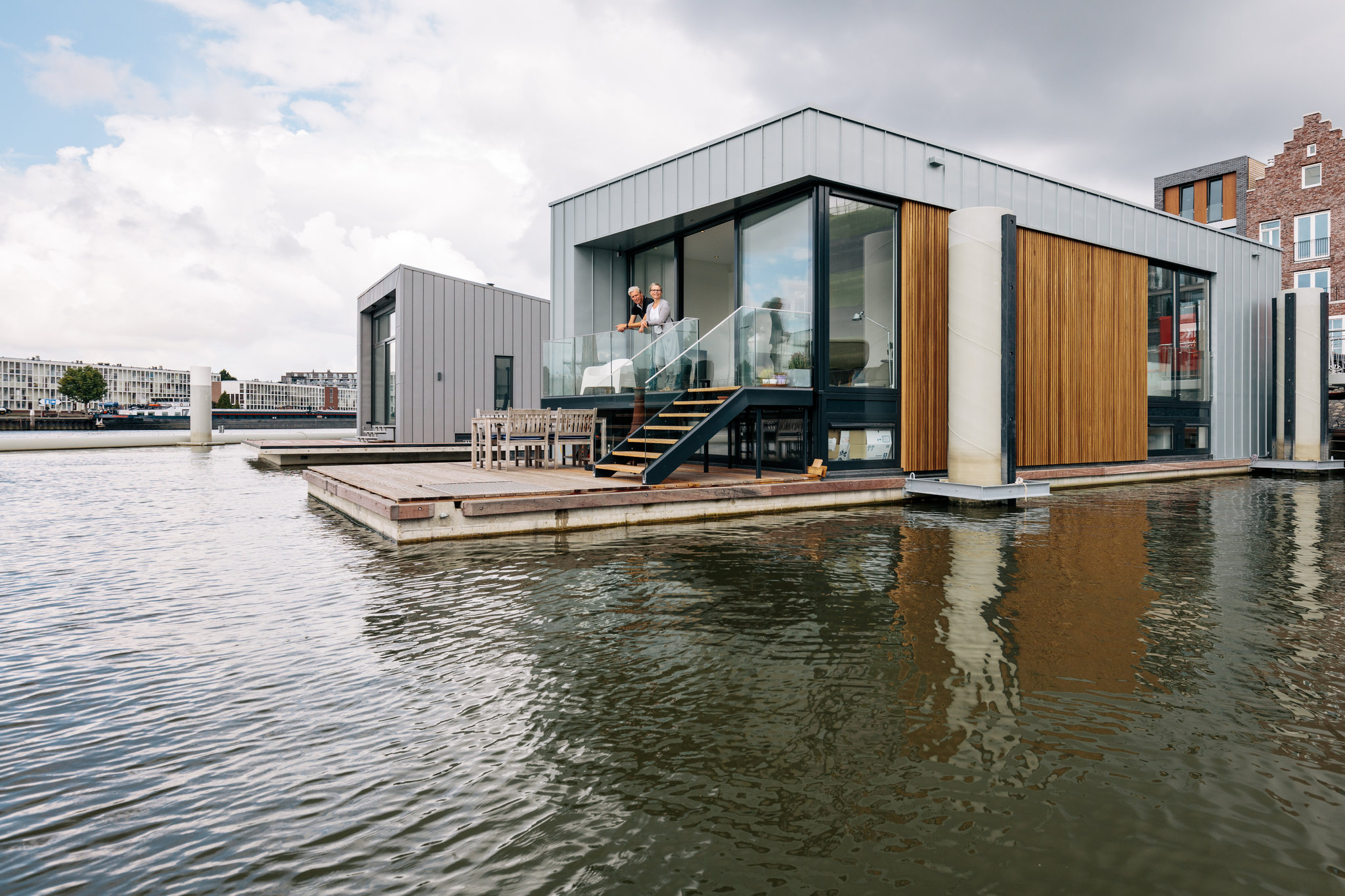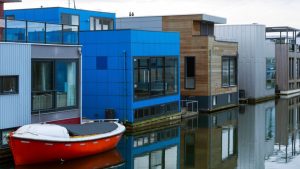Introduction
In an age where climate change intensifies flood risks, finding innovative ways to protect our homes and the environment is paramount. Floating houses have emerged as a creative solution, offering not just shelter but a resilient lifestyle in flood-prone areas.
Designing for Flood Resilience
Beyond Houseboats: The Anatomy of Floating Houses
Floating houses are far from ordinary houseboats; they are architectural marvels designed to thrive in the face of adversity. Explore the critical design elements that set these homes apart:
- Buoyant Foundations: Crafted from buoyant materials, these foundations keep floating houses afloat during floods.
- Adaptive Moorings: Secure yet flexible moorings allow homes to rise and fall with changing water levels while staying anchored.
- Eco-friendly Materials: Many floating houses prioritize sustainable building materials to minimize their environmental footprint.
Luxurious Living on Water
Contrary to the cramped quarters of traditional houseboats, modern floating houses offer spacious, comfortable interiors. Uncover how these homes seamlessly blend luxury living with flood resilience.
Sustainability Afloat
Floating houses are a beacon of sustainability, appealing to eco-conscious individuals. This section delves into their environmental benefits:
- Reduced Carbon Footprint: With their design and reduced land use, floating houses have a smaller carbon footprint compared to traditional homes.
- Off-Grid Features: Many incorporate renewable energy sources like solar panels, making them self-sufficient and energy-efficient.
- Ecosystem Integration: Floating houses often prioritize the preservation of aquatic ecosystems and wildlife.
Image by: https://www.bbc.com/
Beyond Flood Protection
Floating houses offer more than just flood resistance. Here, we explore additional benefits that make them an enticing choice:
- Breathtaking Views: Living on water provides stunning vistas and the serenity of waterfront living.
- Community Living: Floating house communities foster strong bonds among residents.
- Adaptability: These houses can adapt to changing water levels and locations, offering flexibility for relocation.
Challenges and the Future
While floating houses present numerous advantages, they also come with unique challenges. This section discusses the challenges associated with owning and maintaining a floating house and provides insights into the future of flood-resilient living.
Informative Table: “Floating Houses at a Glance”
| Feature | Benefits |
|---|---|
| Buoyant Foundations | Flood resilience and stability |
| Sustainable Materials | Reduced environmental impact |
| Renewable Energy | Off-grid living and energy efficiency |
| Scenic Views | Tranquil waterfront living |
| Community Living | Strong sense of community |
| Adaptability | Flexibility in location and water level changes |
Comparative Table: “Floating Houses vs. Traditional Homes”
| Feature | Floating Houses | Traditional Homes |
|---|---|---|
| Flood Resistance | High | Vulnerable |
| Environmental Impact | Low | Land use and ecosystem impact |
| Energy Efficiency | High | Varies |
| Waterfront Living Experience | Exceptional | Limited |
| Community Interaction | Strong sense of community | Varies |
| Flexibility in Location | High | Limited |
Conclusion
Floating houses represent an innovative, eco-friendly, and resilient solution to the challenges posed by floods and rising water levels. These exceptional dwellings offer more than just shelter; they provide a unique and sustainable way of life that appeals to individuals seeking safety in flood-prone regions. As climate change continues to impact our world, exploring alternatives like floating houses is a promising step toward a safer and more adaptable future.




